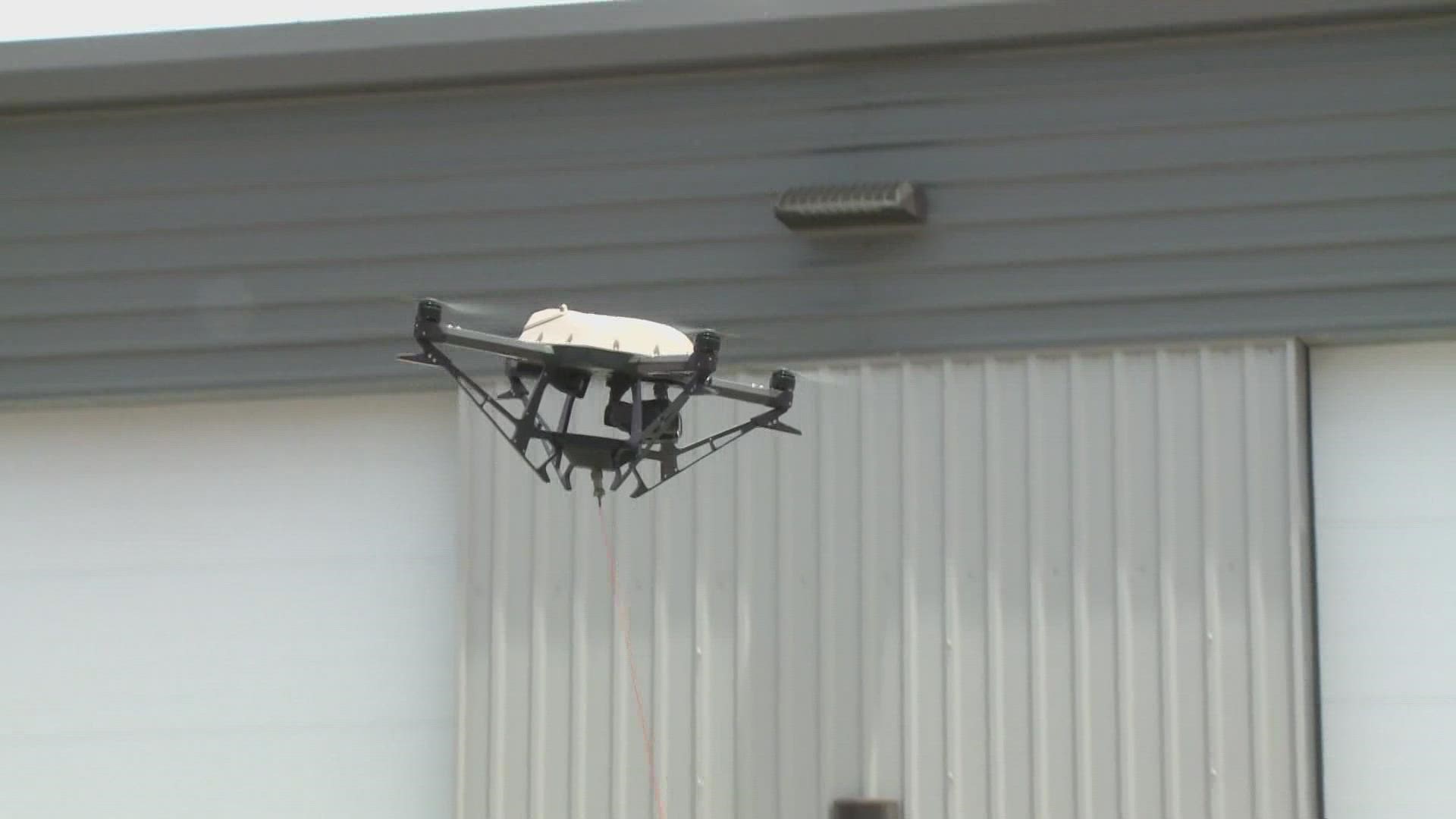SAN ANTONIO — As drone technology continues to evolve, one Florida-based company has rolled out an unmanned aerial vehicle (UAV) capable of security surveillance while staying up in the air for days at a time.
The latest development: drones that are tethered to a central power source on the ground, allowing the UAV to reach max altitudes of 200 feet while withstanding up to 30 mph winds and carrying five-pound payloads.
“Most quadcopters can only operate for anywhere from 20 to 45 minutes. When you take a drone up a tether, all the power and data are going up and down that tether, so you can launch it and it can fly for a persistent amount of time—days,” said Kevin Cochie, chief strategy officer of Hoverfly Technologies.
Hoverfly’s tethered technology is primarily utilized by the U.S. Department of Defense, including for base security and surveillance on the border in Poland, next door to war-torn Ukraine.
The tethered drones are also currently hovering over America’s own borders.
“You think of a border agent that is doing patrols. But they want to have eyes way, way out in front of them so they don’t stumble upon a situation that wouldn’t be favorable to them," Cochie said. "So they have the ability to launch out of a truck or dismount out of a truck several miles back."
The drone-on-a-rope is also helping fight fires. Back in 2017, the New York City Fire Department deployed Hoverfly’s technology for the first time during a four-alarm blaze in the Bronx.
“With its infrared camera, it can detect hotspots on top of the building before firefighters would go into that area on a building and then ultimately collapse,” Cochie said.
Kelly Riddle, owner of Kelmar Global Private Investigators, welcomes the emerging technology of tethered drones. Though it's a small market today, it paves the way for analyzing ways to improve the devices and make them more feasible in different situations.
“Tethering is going to be an issue. It’s definite pros, but it’s got so many different limitations,” Riddle said.
He agrees the nearly unlimited flight-time through the battery is a main attraction to providing more than just safety surveillance.
“Crime scenes, arsons, fire scenes... it could even help to monitor brush fires and agricultural uses,” Riddle said.
The decades-long security expert also recognizes the barriers of Mother Nature and its impact on tethered drones.
“Its limitations are wind shears, you still have to deal with wind shears. You gotta worry about trees and powerlines and things like that so you’re not going to be able to just fly it like you would a regular drone,” Riddle said.
As for Cochie, he sees the potential of Hoverfly’s tethered drones as one day serving society in a bigger way. While the technology evolves in the government sector, he believes tethered drones are bound to see a more prominent future commercially.
“The American public is going to become desensitized to drones flying in their immediate space,” Cochie said. “We absolutely see a day where there will be a tethered drone on every shopping mall, on every government building, on every school that can be rapidly launched by a user sitting in a control room or somebody on site.”

